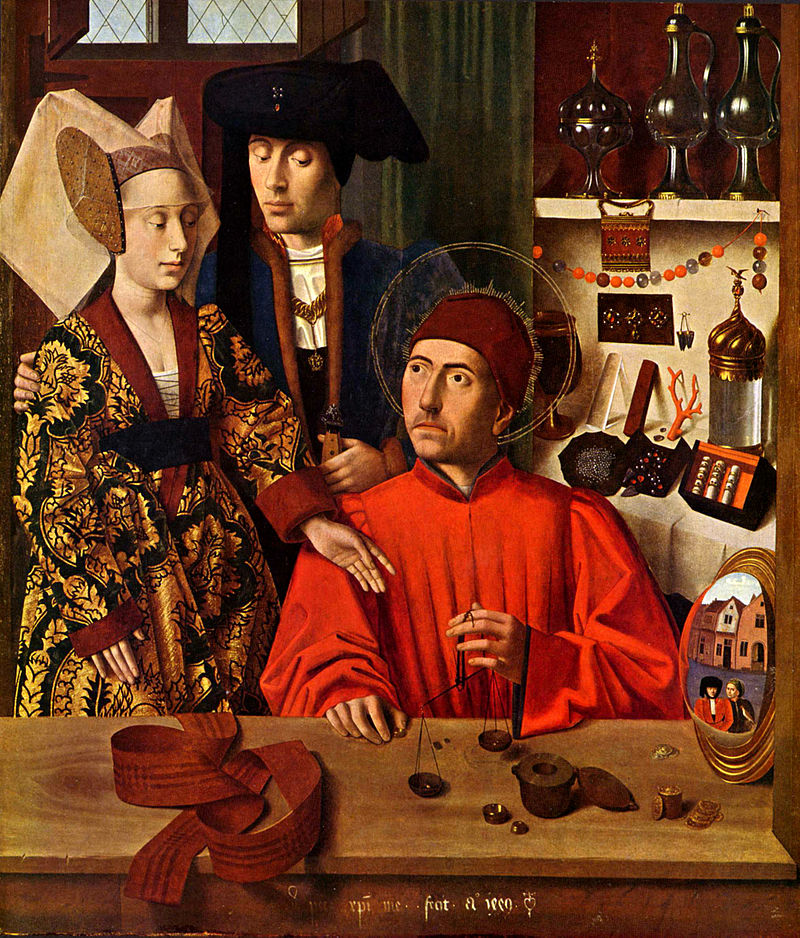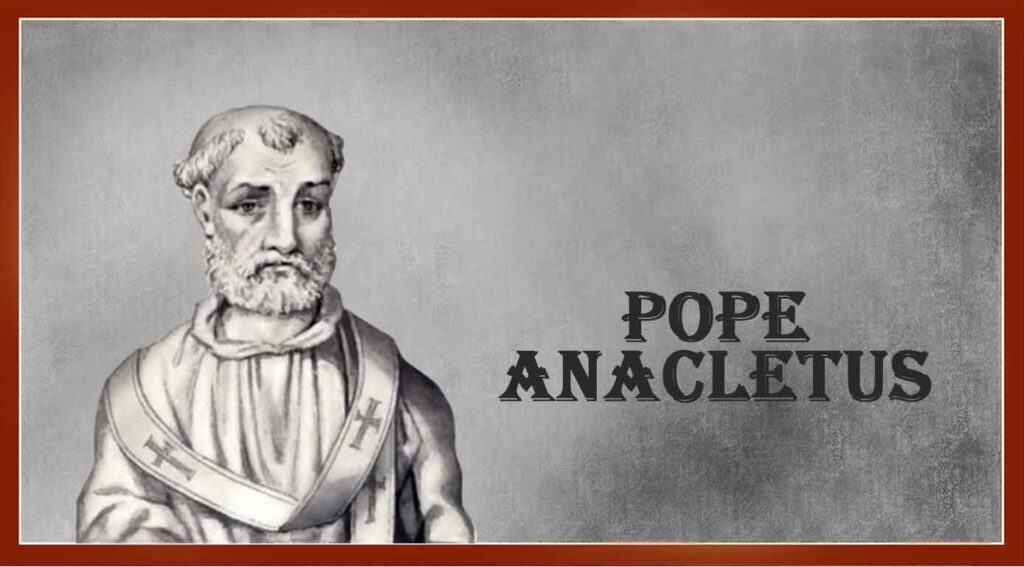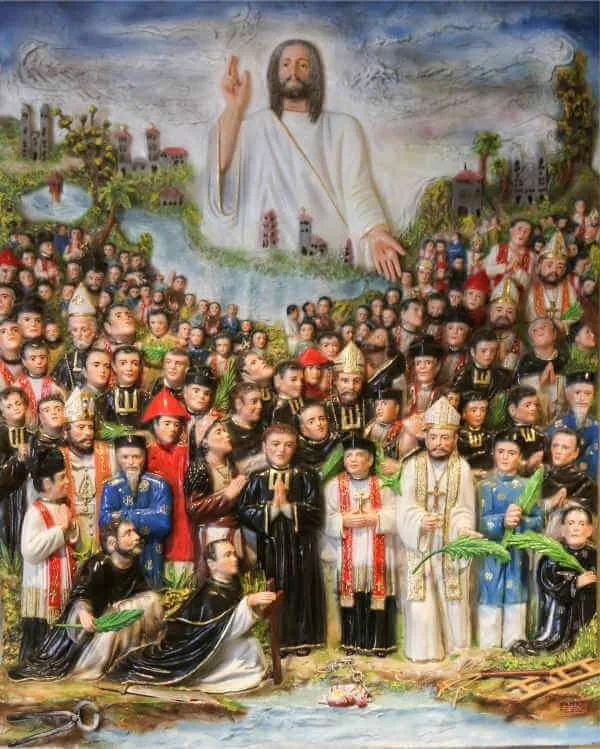Profile
Eligius was the son of Eucherius and Terrigia. He was extremely skillful metalsmith, apprenticed to the master of the mint at Limoges, France. He was the treasurer at Marseilles, France, and a master of the mint under King Clotaire II in Paris, France; a close friend of and advisor to Clotaire.
Noted for his piety, hard work and honesty, Eligius was generous to the poor, ransomed slaves (including Saint Tillo of Solignac), built churches, a monastery at Solignac, France, and a major convent in Paris. It was said that you could easily find his house by the number of poor people there that he was caring for. Counselor to and diplomat for King Dagobert I. Friend of Saint Ouen of Rouen with whom he formed a small religious society. Persuaded Breton King Judicael to accept the authority of Dagobert.
Ordained in 640. Bishop of Noyon, France and Tournai, Belgium in 641. Built the basilica of Saint Paul. Preacher in Antwerp, Ghent, and Courtai in Belgium, with many converts, generally brought to the faith by his example of charity and work with the poor and sick. Friend and spiritual teacher of Saint Godeberta. Encouraged devotion to the saints and reverence for their relics; he discovered the relics of Saint Quentin, Saint Piaton, and Saint Lucian of Beauvais, and made many reliquaries himself. Miracle worker with the gifts of clairvoyance and prophecy; he foresaw the date of his own death.
He has become the traditional patron of all smiths, metal workers, and craftsmen. His patronage of horses and the people who work with them stems first from his patronage of smiths and craftmen, but also from his having left a horse to a priest at his death. The new bishop liked the horse, and took it from the priest. The horse became sick, but recovered immediately when it was returned to the priest that Eligius had chosen.
There is also a legend of Eligius removing a horse‘s leg in order to easy shoe it, then putting the leg back in place. In some places horses are blessed on his feast day. Through the years, horse-drawn cabs were replaced by motorized ones, and stables were supplanted by garages and gas stations, but the patronage of the people who do those jobs and work in those places has remained.
Born
588 at Catelat, near Limoges, France
Died
1 December 660 at Noyon, France of high fever
interred in the cathedral of Noyon
Canonized
Pre-Congregation
Patronage
- against boils
- against epidemics
- against equine diseases
- against poverty
- against ulcers
- agricultural workers
- basket makers
- blacksmiths
- boilermakers
- cab drivers
- cabmen
- candle makers
- carpenters
- carriage makers
- cart makers
- carters
- cartwrights
- clock makers
- coachmen
- coachwrights
- computer scientists
- craftsmen
- cutlers
- cutlery makers
- electricians
- engravers
- farm workers
- farmers
- farriers
- garage workers
- gas station workers
- gilders
- gold workers
- goldsmiths
- guards
- gunsmiths
- harness makers
- horse traders
- horseshoe makers
- jewelers
- jockeys
- knife makers
- laborers
- lamp makers
- livestock
- locksmiths
- mechanics
- metal workers
- metalsmiths
- miners
- minters
- minting
- numismatics
- REME
- Royal Electrical and
- Mechanical Engineers
- saddle makers
- saddlers
- scissors grinders
- security guards
- servants
- silversmiths
- taxi drivers
- teamsters
- tinsmiths
- tool makers
- veterinarians
- watch makers
- wheelwrights
- Worshipful Company of
- Blacksmiths
- coin collectors
- garages
- gas stations
- horses
- livestock
- metal collectors
- numismatists
- peasants
- petrol stations
- precious metal collectors
- sick horses
- Eloois-Vijve, Belgium
- Sint-Eloois-Winkel, Belgium
- Carrozzieri, Italy
- Schinveld, Netherlands
Representation
- anvil
- bishop with a crosier in his right hand, on the open palm of his left a miniature church of chased gold
- bishop with a hammer, anvil, and horseshoe
- bishop with a horse
- courtier
- goldsmith
- hammer
- horseshoe
- man grasping a devil‘s nose with pincers
- man holding a chalice and goldsmith‘s hammer
- man holding a horse‘s leg, which he detached from the horse in order to shoe it more easily
- man shoeing a horse
- man with hammer and crown near a smithy
- man with hammer, anvil, and Saint Anthony
- pincers
- with Saint Godebertha of Noyon
- giving a ring to Saint Godebertha
- working as a goldsmith
Sources: https://catholicsaints.info/saint-eligius/
https://en.wikipedia.org/wiki/Saint_Eligius#/media/File:Petrus_Christus_003.jpg








